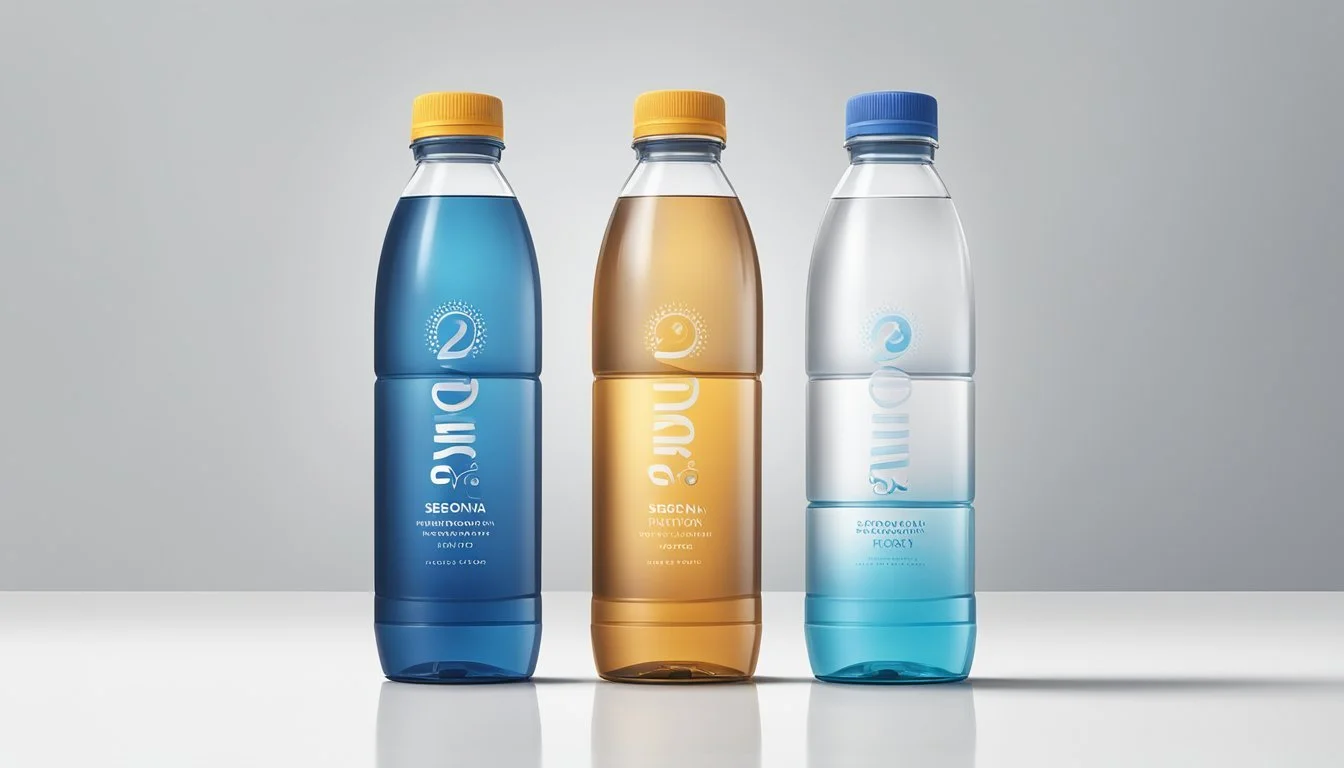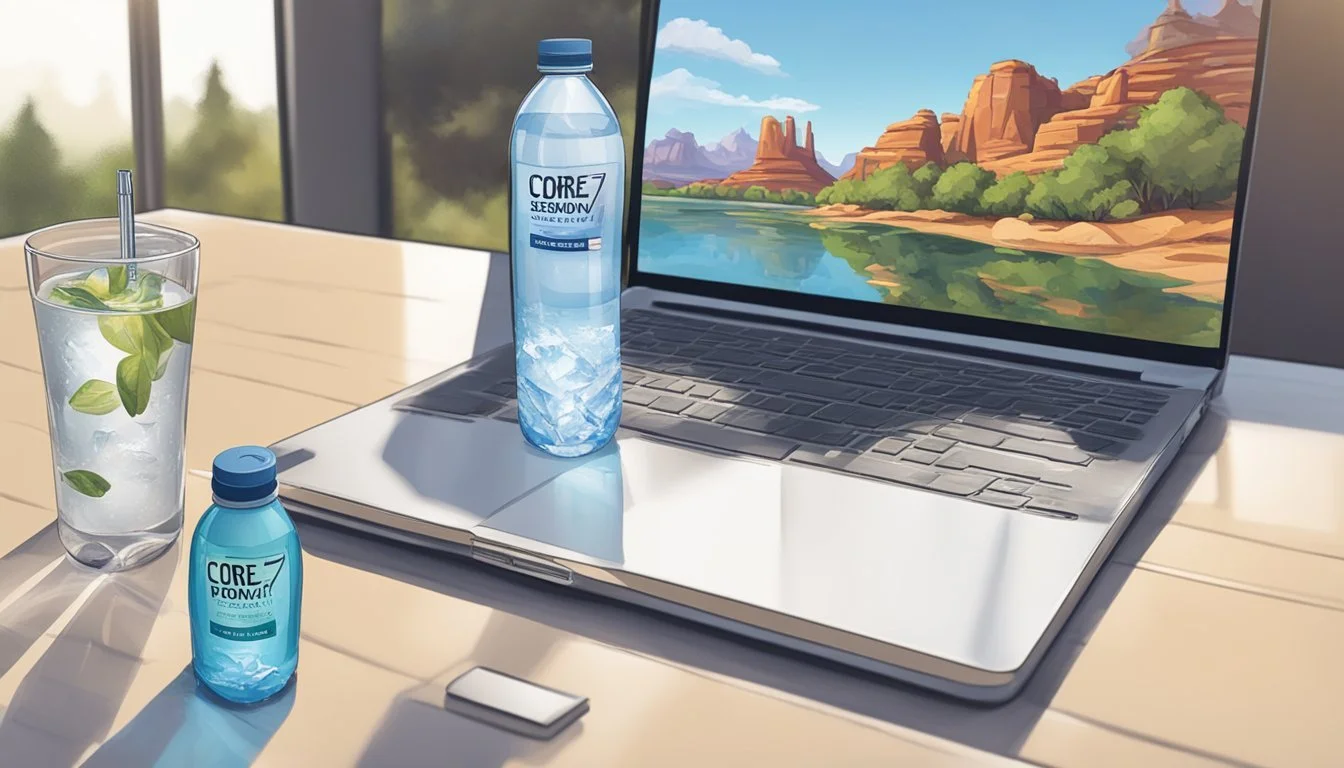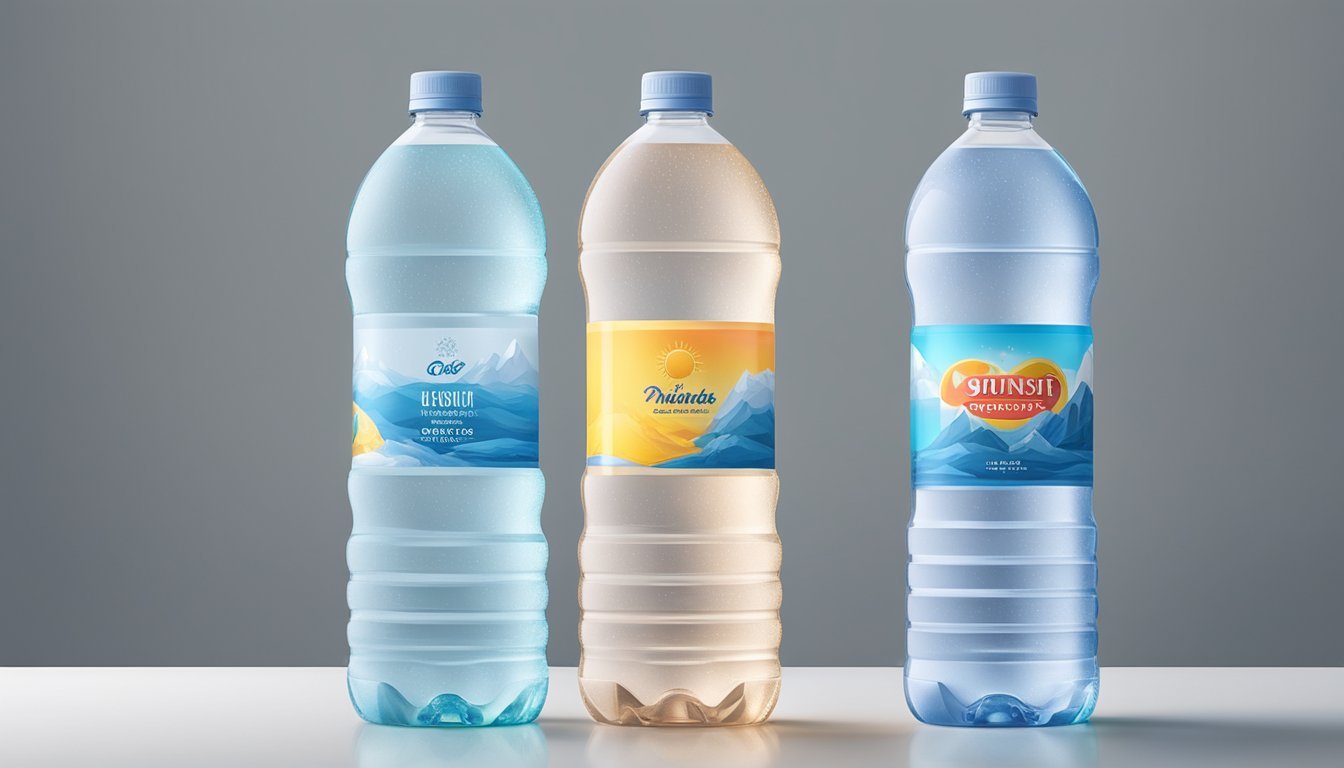Core Hydration vs. Purely Sedona
An Expert Comparison of Bottled Water Brands
Choosing the right bottled water can be more complex than it appears. Core Hydration and Purely Sedona stand out in the crowded market, but which one is better? Core Hydration claims to offer perfectly balanced water with a pH level closely mirroring the human body's natural pH of 7.4, enhancing hydration and potentially supporting overall well-being.
Purely Sedona, on the other hand, boasts pristine water sourced from the Oak Creek Canyon in Sedona, Arizona. Its water is naturally filtered through rock formations, offering a unique taste and high-quality purity without added electrolytes. This makes it a favorite for those who prioritize natural sourcing and minimal processing in their bottled water choices.
When comparing these two brands, one must consider what they value more: the scientifically engineered balance of Core Hydration or the natural purity and taste of Purely Sedona. Each has its strengths, making the decision a matter of personal preference and hydration needs.
Understanding Bottled Water
Bottled water comes in various forms, including spring, mineral, and purified water, each subjected to specific regulations. These regulations ensure safety and quality by governing its source, treatment, and mineral content.
Types of Bottled Water
Spring Water
Spring water is derived from an underground formation where water flows naturally to the surface. It must be collected only at the spring or through a borehole tapping the underground formation.
Mineral Water
Mineral water contains a specific proportion of minerals and trace elements from its source. It cannot undergo any treatment that would alter its mineral composition.
Purified Water
Purified water is processed to remove chemicals and contaminants. Methods like distillation, deionization, and reverse osmosis are common. This type often includes added minerals for taste.
Bottled Water Regulations
Safety Standards
Bottled water must comply with standards set by regulatory bodies like the FDA in the U.S. These standards cover source protection, processing, and bottling practices to ensure water safety and quality.
Labeling Requirements
Labels must indicate the type of water and disclose treatment processes. They must also provide nutritional information, particularly regarding mineral content.
Health Regulations
Regulations prohibit harmful contaminants and enforce limits on substances like nitrates and heavy metals. Regular testing ensures compliance and safeguards public health.
Comparing Core Hydration and Purely Sedona
Core Hydration and Purely Sedona are both premium bottled water brands, each with unique attributes. This section dives into the essential aspects of both brands, including their backgrounds, water sources, and purification processes.
Brand Background
Core Hydration markets itself as providing perfectly balanced pH water. It aims to align with the body's natural pH level of about 7.4, targeting health-conscious consumers. The brand emphasizes a balanced and clean hydration experience with its sleek packaging and strong market presence.
Purely Sedona, named after the iconic Sedona region, highlights the pristine quality of its artesian water. With a focus on natural purity and health benefits, the brand seeks to appeal to those who value unaltered, natural hydration sourced from a famously scenic area known for its clean environment.
Source and Origin
Core Hydration sources its water from various locations, ensuring that it goes through a rigorous purification process to maintain its purity. The water is then balanced for pH, making it an appealing choice for those who prefer neutral to slightly alkaline water.
Purely Sedona draws its water from natural artesian wells in the Sedona region. These wells tap into underground aquifers that often provide water with unique mineral compositions. The brand emphasizes the water's natural state, ensuring minimal processing from the source to the bottle.
Purification Process
Core Hydration utilizes a multi-step purification process, including reverse osmosis, to remove impurities. This method ensures consistent water quality and purity. The final product is then adjusted to achieve an optimal pH level of 7.4, catering to those who prefer balanced hydration.
Purely Sedona prides itself on minimal processing, retaining the natural properties of its artesian water. The water undergoes basic filtration to remove contaminants while preserving natural minerals. This approach ensures that consumers receive water as close to its original state as possible, emphasizing natural purity.
These details ensure a comprehensive understanding of what differentiates Core Hydration and Purely Sedona, focusing on each brand's core values and processes.
Health and Hydration
Understanding how Core Hydration and Purely Sedona impact health and hydration requires examining their electrolyte content and pH levels. Each brand aims to offer unique benefits through these attributes, affecting muscle function, bone health, and overall hydration.
Electrolyte Enhancement
Core Hydration includes a balanced blend of electrolytes and minerals. These electrolytes, such as potassium, calcium, and magnesium, play crucial roles in maintaining muscle function and hydration by facilitating fluid balance and nerve function. This helps in efficient muscle contraction and relaxation.
Purely Sedona, known for its natural spring water, does not commonly add additional electrolytes. However, it may naturally contain trace minerals from its spring source, contributing to hydration and overall health. These natural minerals can support basic muscle functions and hydration needs. A comparative table for better clarity:
Feature Core Hydration Purely Sedona Electrolytes Added electrolytes Natural minerals Source Purified Water Spring Water
pH Level and Alkalinity
Core Hydration boasts an optimal pH level that matches the body's natural pH of about 7.4, making it mildly alkaline. This alignment aids in maintaining pH balance in the bloodstream, which is essential for detoxification and overall health.
Purely Sedona also offers a neutral to slightly alkaline pH, typically around 7.4. The alkaline nature of both waters can help neutralize acidity in the body, promoting bone health and reducing potential acid-related issues. The importance of pH balance cannot be overstated for both bone and muscle health. Comparing the pH levels:
Feature Core Hydration Purely Sedona pH Level ~7.4 (alkaline) ~7.4 (alkaline) Alkalinity Mildly alkaline Naturally alkaline
Nutritional Analysis
Core Hydration and Purely Sedona emphasize different aspects of bottled water nutrition, including mineral content, and added ingredients designed to enhance their respective products. These distinctions are important for those selecting water based on dietary needs and taste preferences.
Mineral Content
Core Hydration focuses on maintaining a balanced pH level of 7.4, aligning with the body's natural pH. It is enhanced with electrolytes and minerals such as calcium, potassium, and magnesium to support hydration and taste. This ultra-purified water contains minimal amounts of sodium, making it suitable for those seeking low-salt options.
Purely Sedona, sourced from natural artesian springs, boasts a rich mineral profile. This includes essential minerals like calcium, magnesium, and potassium, which are naturally occurring in the spring. While it may contain higher levels of such minerals compared to Core Hydration, it is free from any artificial enhancement or purification process that alters its natural state.
Comparing both, Core Hydration offers a controlled mineral addition, whereas Purely Sedona provides a naturally occurring mineral content that may vary slightly by batch due to its natural sourcing.
Added Ingredients
Core Hydration supplements its water with carefully selected electrolytes and minerals to enhance flavor and hydration efficiency without adding sodium, chlorine, or fluorides. Its formula aims at mirroring the body's nutrient needs, resulting in water that is nutrient-enhanced yet remains pure and refreshing.
Purely Sedona takes a different approach by offering water in its most natural form, eschewing any added ingredients. The brand prides itself on the purity and mineral richness of its spring source. This absence of enhancements makes it a preferred choice for those who seek a product with no artificial sweeteners, preservatives, or other additives.
Choosing between Core Hydration and Purely Sedona involves weighing the benefits of a scientifically balanced, nutrient-enhanced water against the appeal of a completely natural, unaltered spring water. Each provides distinct nutritional advantages based on individual preferences and dietary requirements.
Taste and Purity
Core Hydration and Purely Sedona both emphasize purity and taste, but they approach these aspects in distinct ways. This section examines their flavor profile, additives, scientific studies, and quality control measures to determine the winner in these areas.
Flavor Profile and Additives
Core Hydration promotes a balanced taste, achieved through a precise blend of electrolytes and minerals. This blend is tailored to match the body's natural pH level, which is around 7.4. The result is a smooth, neutral taste that appeals to consumers seeking hydration with an optimal pH balance.
Purely Sedona, made from a natural artesian spring, offers a distinct flavor profile due to its natural mineral content. Unlike Core Hydration, it does not add any minerals or electrolytes. This gives Purely Sedona a crisp, clean taste that many find refreshing.
Both brands aim to avoid a plastic taste, which is a common complaint with bottled water. Core Hydration uses BPA-free plastic, while Purely Sedona emphasizes its environmentally friendly bottling process, ensuring that the natural taste is preserved.
Testing and Quality Control
Core Hydration employs rigorous testing to maintain its high purity standards. Each batch of water undergoes multiple filtering stages to remove potential contaminants, ensuring the final product is free from impurities. The company's strict quality control measures guarantee that the electrolyte balance remains consistent in every bottle.
Purely Sedona relies on the inherent purity of its artesian spring source. The water naturally passes through layers of volcanic rock, which act as a natural filter. This natural filtration process is supplemented by periodic laboratory testing to monitor contaminant levels and ensure safety.
Scientific studies on Core Hydration focus on its pH balance and electrolyte content, which are designed to align with human hydration needs. Purely Sedona emphasizes its minimal processing and natural purity, appealing to consumers who prefer water in its most natural state.
Both brands ensure high standards of purity, but their methods reflect different philosophies: engineered balance versus natural simplicity.
Environmental Impact and Sustainability
Examining bottled water brands like Core Hydration and Purely Sedona requires a look at their environmental footprint, considering both packaging and carbon emissions.
Packaging and Recycling
Core Hydration and Purely Sedona utilize different packaging materials, impacting their sustainability. Core Hydration often uses BPA-free plastic bottles, designed to be recyclable, but these can still contribute to environmental waste if not properly recycled. On the other hand, Purely Sedona emphasizes the use of glass bottles, which are inherently more recyclable and can be reused multiple times, significantly reducing waste.
Recycling rates for both brands can vary. Core Hydration promotes the recyclability of its plastic bottles, yet plastic recycling remains less effective compared to glass. Consumers are encouraged to recycle, but actual recycling rates can be low, contributing to environmental pollution. Purely Sedona's glass bottles, while heavier, have higher recycling rates and do not degrade as much during the process.
Carbon Footprint and Resource Management
The carbon footprint of bottled water production is significant. Core Hydration's use of plastic bottles typically involves less energy-intensive manufacturing compared to glass but still generates a substantial amount of CO2 emissions. For instance, producing 50 oz of bottled water can release between 1.6 and 22 oz of CO2.
Purely Sedona, focusing on glass bottles, may have a higher initial carbon footprint due to the energy required to produce and transport heavier containers. However, the ability to reuse and recycle glass more efficiently can mitigate this over time. Both brands face the challenge of managing water sources sustainably, ensuring that their extraction processes do not deplete natural reserves unethically or unsustainably.
Resource management also includes the methods used for bottling and the sourcing of water. Sustainable practices in this area can help minimize the impact on local ecosystems, ensuring long-term availability and quality of water supplies.
Consumer Considerations
When choosing between Core Hydration and Purely Sedona, consumers focus on price, accessibility, brand perception, and marketing. Understanding these factors helps buyers make informed decisions.
Price Point and Accessibility
Core Hydration and Purely Sedona occupy different price brackets. Core Hydration is generally more affordable, retailing around $1.50 to $2 per bottle. In contrast, Purely Sedona tends to be higher, often exceeding $2.50 per bottle.
Availability affects consumer decisions. Core Hydration is widely accessible, found in major supermarkets and convenience stores. Meanwhile, Purely Sedona may have more limited distribution, often seen in specialty stores and select online retailers.
Price and accessibility play crucial roles. Budget-conscious consumers might lean towards Core Hydration, whereas those prioritizing boutique brands might opt for Purely Sedona despite the higher cost.
Brand Perception and Marketing
Core Hydration emphasizes its pH-balanced water, aligned with the body's natural pH. This marketing angle resonates with health-conscious consumers who value hydration being in harmony with their body's needs.
Purely Sedona, on the other hand, often highlights its source - pristine spring water from Sedona, Arizona. This positioning appeals to consumers seeking natural, unprocessed options. The brand leverages imagery of purity and nature, aligning with eco-conscious buyers.
Both brands use distinct strategies to carve out their market niches. Core Hydration's focus on health alignment and Purely Sedona's emphasis on natural origins shape their brand perceptions, influencing consumer preference based on individual values.
Final Verdict
Core Hydration offers water that is balanced with an almost neutral pH level of around 7.4, which claims to be in sync with the body's natural pH. This can be beneficial for those mindful of health and wellness.
Purely Sedona Water sources its water from pristine springs. This sourcing method may appeal to those who prioritize natural and minimally processed options.
Taste: Core Hydration often receives praise for its clean, crisp taste, slightly enhanced by the added minerals. Purely Sedona Water has a fresh and natural flavor, drawing from its mountain spring origins.
Cost: Core Hydration is often positioned as a premium product with pricing reflecting its added features such as pH balance and ergonomic bottle design. Purely Sedona Water may vary in cost but often positions itself as a mid-range option.
Sustainability: Core Hydration uses recycled plastic in its bottles and encourages eco-friendly practices. Purely Sedona also emphasizes sustainability, highlighting its environmentally conscious sourcing and packaging.
Both brands have their unique advantages. Core Hydration might be preferred by those who value a balanced pH and electrolyte-enhanced water. Purely Sedona might attract those who appreciate naturally sourced spring water.







